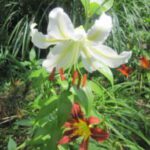plant based dyes
Long before the dawn of synthetic dyes, the world of textiles was enchanting us with warm brick reds, stunning fuchsias, royal purples, electric blues, moss greens and bright yellows. The art of fiber, yarn and fabric dyeing has hundreds of years of history, much of which was abandoned since chemical processing provided a much easier way to mass produce textile coloring and patterns.
Plant based dyeing is a cross between cooking and painting: there are hundreds of recipes and plant combinations that will allow one to obtain virtually any color and atany intensity.
The secret of successful dyeing is called mordanting, which is a fancy French term for preprocessing the material by boiling it in an alum or other metallic salt solution to make it take color better. This method significantly improved the color intensity and color fastness.
As I was saying, you can obtain any color from plants, by mixing different plants in the dye recipe. Here is a plant color rainbow:
– red: madder and sandalwood
– orange: onion skins and turmeric
– yellow: goldenrod, elder, and weld
– green: ivy, common nettle, and mosses
– blue: indigo plant
– indigo: blueberries
– purple: logwood, elderberries.
Henna and safflower will produce muted earth tones, beiges and browns. As a rule, if the juice of a fruit stains clothing it will probably generate at least a pastel color, especially if you are using a mixture of alum and cream of tartar to mordant the textile medium.
Even though natural coloring is not an easy solution for mass production, it regained popularity with the advent of the green movement. Many small batch manufacturers use it successfully for commercial yarn dyeing.




 Previous Post
Previous Post Next Post
Next Post




